Navigation
Expanded Focus of Caribbean Coral Reef Protection Efforts Recommended
Conservation efforts aimed at protecting endangered Caribbean corals may be overlooking regions where corals are best equipped to evolve in response to global warming and other climate challenges.
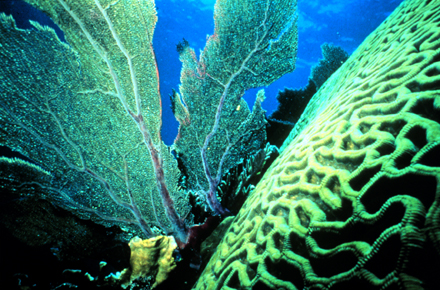 |
| A thriving, healthy Carribean coral reef today: its evolution is an important factor in its future. Credit: NOAA |
Conservation efforts aimed at protecting endangered Caribbean corals may be overlooking regions where corals are best equipped to evolve in response to global warming and other climate challenges.
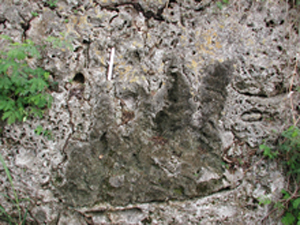 |
| Scientists are studying extinct species of coral to learn about reefs today. Credit: Ann F. Budd and John M. Pandolfi |
That's the take-home message of a paper published in the journal Science by researchers Ann Budd of the University of Iowa and John Pandolfi of the University of Queensland, Australia. Budd and Pandolfi focus on understanding the biodiversity of reef-building corals--organisms that are highly diverse and seriously threatened.
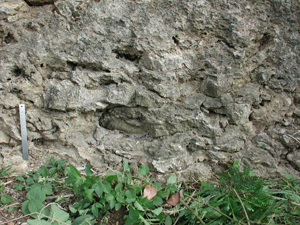 |
| A coral reef in Barbados called the Montastraea annularis complex has several extinct species. Credit: Ann F. Budd and John M. Pandolfi |
Their work focuses on evolutionary processes documented in the fossil record over long time periods, a history that encompasses and shows the effects of global environmental change.
"The research demonstrates that the predominance of evolutionary innovation occurs at the outlying edges of Caribbean coral species ranges, as opposed to the well-connected central part of the Caribbean," said H. Richard Lane, program director in the National Science Foundation (NSF)'s Division of Earth Sciences, which funded the research along with NSF's Division of Environmental Biology.
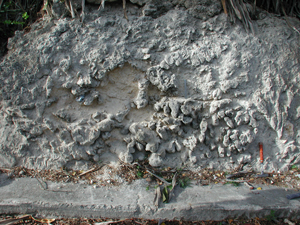 |
| An extinct pipe-organ coral at the geographic edge of current reef distributions. Credit: Ann F. Budd and John M. Pandolfi |
The scientists conclude that if coral reef conservation strategies protect only the centers of high species richness, they will miss important sources of evolutionary novelty during periods of global change. "Current conservation priorities are calculated on the basis of species richness, endemism [geographical uniqueness] and threats," said Budd. "However, areas ranked highly for these factors may not represent regions of maximum evolutionary potential."
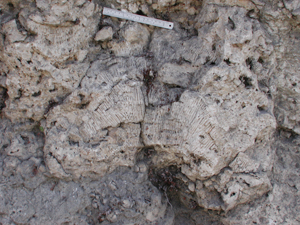 |
| An extinct platy morphospecies within a Caribbean coral reef complex. Credit: Ann F. Budd and John M. Pandolfi |
Budd and Pandolfi conducted their study by analyzing the relationship between geography and evolutionary innovation in a complex of Caribbean reef corals where morphological and genetic data match on species differences.
Based on a comparison of fossil corals and modern colonies, the scientists found that morphological disparity varies from the center to the edge of the Caribbean, and that lineages are static at well-connected central locations--but split or fuse in edge zones. "The results show that edge zones are critical to biodiversity," Budd said.
The findings mirror those of studies of the molecular biogeography of sea urchins and other marine invertebrates, she said, and are important to understanding the evolutionary ecology of the sea under projected global climate change. The scientists argue for a coral reef conservation strategy that not only takes into account biodiversity hotspots, but also focuses on evolutionary processes and the preservation of peripheral areas of species ranges, as well as connectivity among populations.
This article is from the National Science Foundation, June 17, 2010.
Search
Latest articles
Agriculture
- World Water Week: Healthy ecosystems essential to human health: from coronavirus to malnutrition Online session Wednesday 24 August 17:00-18:20
- World Water Week: Healthy ecosystems essential to human health: from coronavirus to malnutrition Online session Wednesday 24 August 17:00-18:20
Air Pollution
- "Water and Sanitation-Related Diseases and the Changing Environment: Challenges, Interventions, and Preventive Measures" Volume 2 Is Now Available
- Global Innovation Exchange Co-Created by Horizon International, USAID, Bill and Melinda Gates Foundation and Others
Biodiversity
- It is time for international mobilization against climate change
- World Water Week: Healthy ecosystems essential to human health: from coronavirus to malnutrition Online session Wednesday 24 August 17:00-18:20
Desertification
- World Water Week: Healthy ecosystems essential to human health: from coronavirus to malnutrition Online session Wednesday 24 August 17:00-18:20
- UN Food Systems Summit Receives Over 1,200 Ideas to Help Meet Sustainable Development Goals
Endangered Species
- Mangrove Action Project Collaborates to Restore and Preserve Mangrove Ecosystems
- Coral Research in Palau offers a “Glimmer of Hope”
Energy
- Global Innovation Exchange Co-Created by Horizon International, USAID, Bill and Melinda Gates Foundation and Others
- Wildlife Preservation in Southeast Nova Scotia
Exhibits
- Global Innovation Exchange Co-Created by Horizon International, USAID, Bill and Melinda Gates Foundation and Others
- Coral Reefs
Forests
- NASA Satellites Reveal Major Shifts in Global Freshwater Updated June 2020
- Global Innovation Exchange Co-Created by Horizon International, USAID, Bill and Melinda Gates Foundation and Others
Global Climate Change
- It is time for international mobilization against climate change
- It is time for international mobilization against climate change
Global Health
- World Water Week: Healthy ecosystems essential to human health: from coronavirus to malnutrition Online session Wednesday 24 August 17:00-18:20
- More than 400 schoolgirls, family and teachers rescued from Afghanistan by small coalition
Industry
- "Water and Sanitation-Related Diseases and the Changing Environment: Challenges, Interventions, and Preventive Measures" Volume 2 Is Now Available
- Global Innovation Exchange Co-Created by Horizon International, USAID, Bill and Melinda Gates Foundation and Others
Natural Disaster Relief
- STOP ATTACKS ON HEALTH CARE IN UKRAINE
- Global Innovation Exchange Co-Created by Horizon International, USAID, Bill and Melinda Gates Foundation and Others
News and Special Reports
- World Water Week: Healthy ecosystems essential to human health: from coronavirus to malnutrition Online session Wednesday 24 August 17:00-18:20
- STOP ATTACKS ON HEALTH CARE IN UKRAINE
Oceans, Coral Reefs
- World Water Week: Healthy ecosystems essential to human health: from coronavirus to malnutrition Online session Wednesday 24 August 17:00-18:20
- Mangrove Action Project Collaborates to Restore and Preserve Mangrove Ecosystems
Pollution
- Zakaria Ouedraogo of Burkina Faso Produces Film “Nzoue Fiyen: Water Not Drinkable”
- "Water and Sanitation-Related Diseases and the Changing Environment: Challenges, Interventions, and Preventive Measures" Volume 2 Is Now Available
Population
- "Water and Sanitation-Related Diseases and the Changing Environment: Challenges, Interventions, and Preventive Measures" Volume 2 Is Now Available
- "Water and Sanitation-Related Diseases and the Changing Environment: Challenges, Interventions, and Preventive Measures" Volume 2 Is Now Available
Public Health
- Honouring the visionary behind India’s sanitation revolution
- Honouring the visionary behind India’s sanitation revolution
Rivers
- World Water Week: Healthy ecosystems essential to human health: from coronavirus to malnutrition Online session Wednesday 24 August 17:00-18:20
- Mangrove Action Project Collaborates to Restore and Preserve Mangrove Ecosystems
Sanitation
- Honouring the visionary behind India’s sanitation revolution
- Honouring the visionary behind India’s sanitation revolution
Toxic Chemicals
- "Water and Sanitation-Related Diseases and the Changing Environment: Challenges, Interventions, and Preventive Measures" Volume 2 Is Now Available
- Actions to Prevent Polluted Drinking Water in the United States
Transportation
- "Water and Sanitation-Related Diseases and the Changing Environment: Challenges, Interventions, and Preventive Measures" Volume 2 Is Now Available
- Urbanization Provides Opportunities for Transition to a Green Economy, Says New Report
Waste Management
- Honouring the visionary behind India’s sanitation revolution
- Honouring the visionary behind India’s sanitation revolution
Water
- Honouring the visionary behind India’s sanitation revolution
- Honouring the visionary behind India’s sanitation revolution
Water and Sanitation
- Honouring the visionary behind India’s sanitation revolution
- Honouring the visionary behind India’s sanitation revolution

